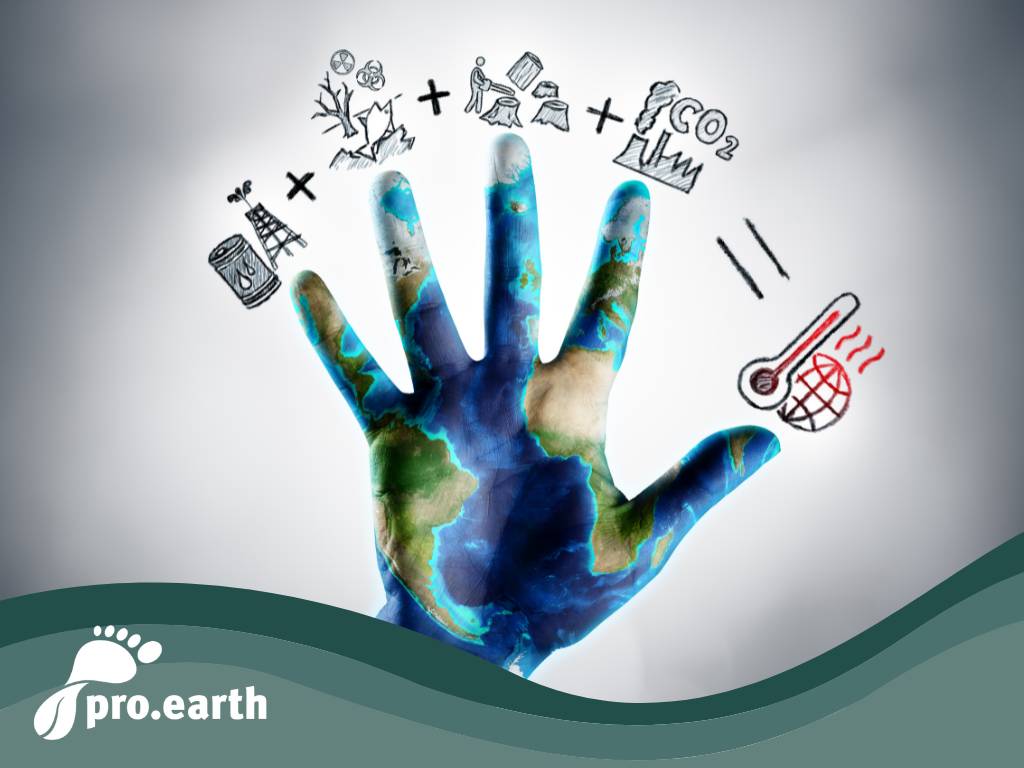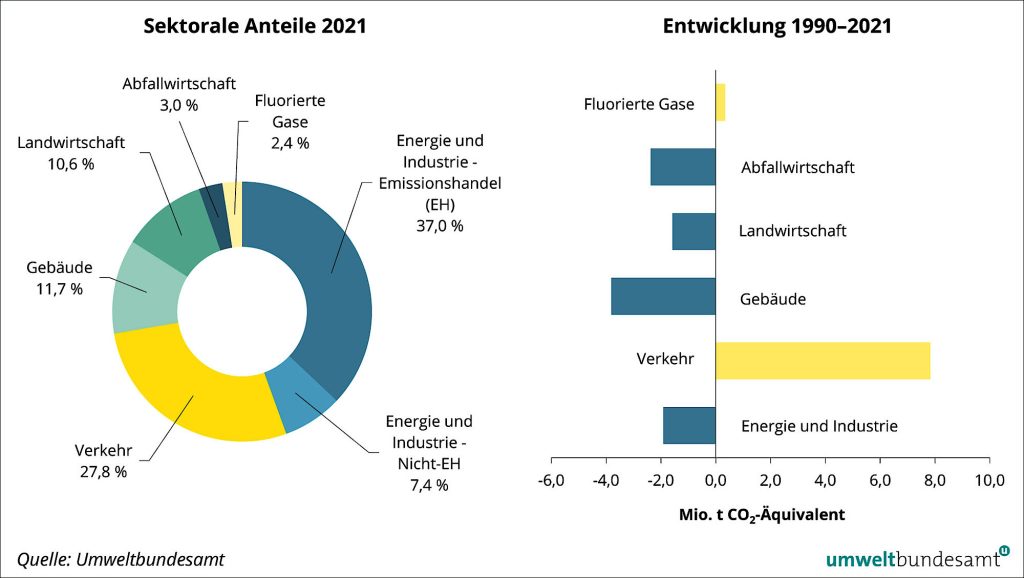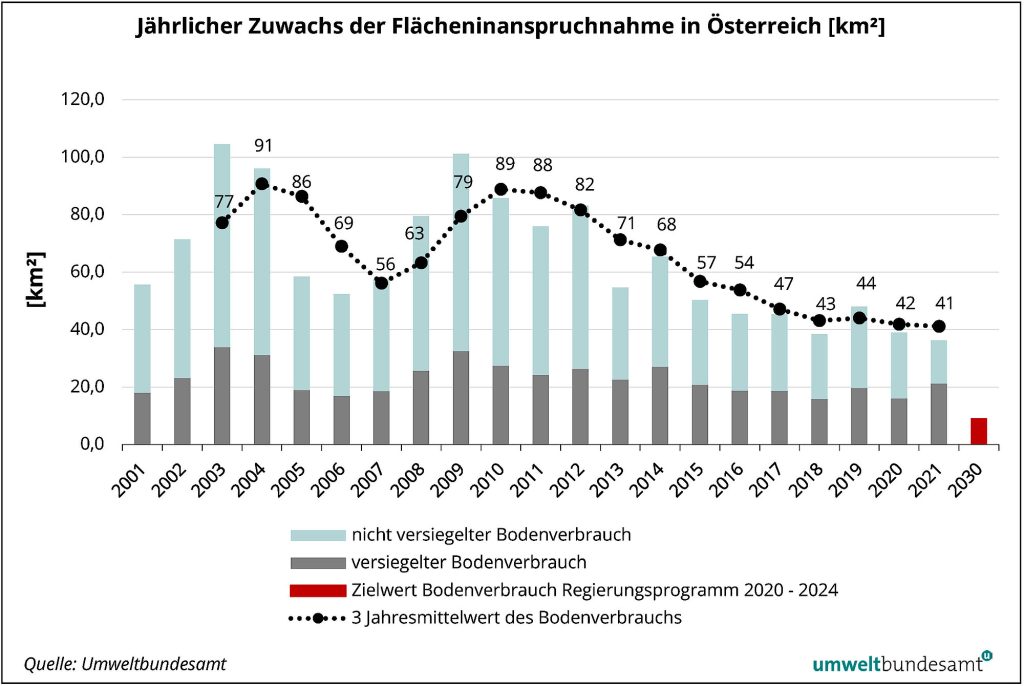Where to apply the lever

Last week's Earth Overshoot Day in Austria showed that we are still a long way from achieving a massive reduction in greenhouse gas emissions (GHG). According to the Federal Environment Agency, the energy and industry, transport, buildings and agriculture sectors are among the biggest contributors to GHG emissions, with transport being the main problem.
The total emissions of these sectors at a glance (2021)
- Energy and industry - 34.5 million tons ofCO2 equivalent
- Transport - 21.6 million tons ofCO2 equivalent
- Buildings sector - 9.1 million tons ofCO2 equivalent
- Agriculture - 8.2 million tons ofCO2 equivalent
- Waste management - 2.3 million tons ofCO2 equivalent
- Fluorinated gases - 1.9 million tons ofCO2 equivalent.
In spatial terms, large cities such as Vienna are GHG hotspots, which is due to the large number of people in a small area. In per capita terms, Upper Austria is ahead of Lower Austria and Styria with 29%, which also correlates with the number of large industrial companies.

The transport sector in particular, with a 57% increase in greenhouse gas emissions over the last 30 years, is the biggest problem area.
But it would be so easy
According to surveys, measures that could limit GHG emissions in the transport sector are not very popular with the population. According to a survey conducted by the Gallup Institute on behalf of Wiener Städtische Versicherung, around 61% of the population are against the much-discussed speed limit of 100 km/h on freeways. According to the Federal Environment Agency, this speed limit would have a major effect: "Fewer pollutants, lower fuel consumption, less noise and greater road safety: for every kilometer driven, a car traveling at 100 km/h instead of 130 km/h emits on average 49.7% less nitrogen oxides and 34.2% less particulate matter. In addition, the lower speed reduces CO2 emissions by around 23% and thus saves just as much fuel.".
https://news.pro.earth/2023/01/27/groessere-co2-einsparung-durch-tempolimit-laut-neuer-studie/
Having a say
"If people feel involved, then they propose this measure themselves, as the Climate Council has shown. But if not, then it is perceived as paternalism. Fear of climate-friendly policies is widespread where people feel that decisions are being made far away from the reality of their lives," says Marianne Penker, Professor of Rural Sociology at the Institute for Sustainable Economic Development at the University of Natural Resources and Life Sciences (BOKU) Vienna, who was an advisor to last year's Climate Council, in which 100 randomly selected people from Austria were invited to make recommendations on climate policy last year.
Soil sealing is a major task
In addition to GHGs, the consumption and destruction of natural resources is also part of the Earth Overshoot Day calculation, including soil sealing. Sadly, Austria ranks first in the EU in terms of soil sealing.
Statistically speaking, on March 21, 2023, we will have already exceeded the official "sustainability target" of a maximum of 2.5 hectares of land consumption per day for the entire year 2023, writes WWF Austria. We are currently using 11.3 hectares of land per day, which is more than four times the "sustainability target". WWF launched its own petition "Nature against concrete" and has been fighting for years against the ongoing concretization of our soils.

"The competition for land will become even greater, because the transformation towards climate justice also requires land for the production of renewable energy and biomass," says Penker and calls for stricter nationwide regulations to curb land sealing.
Our motto is once again required: #actioninsteadofspeech
https://news.pro.earth/2023/04/06/heute-haben-wir-in-oesterreich-also-die-ressourcen-die-wir-fuer-das-jahr-zur-verfuegung-gehabt-haetten-verbraucht/
Further links:
Federal Environment Agency on the subject of GHG
Federal Environment Agency on the topic of land sealing






